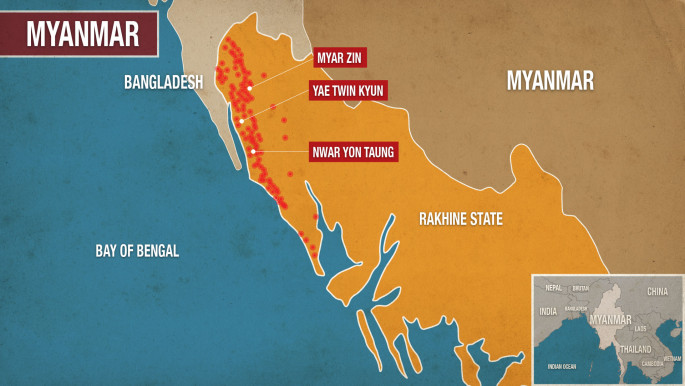Makeshift schools a rare sanctuary for traumatised Rohingya children
With minimal facilities available, aid groups are hurrying to set up schools and safe zones for the children to help deal with the trauma which so many have experienced.
At the entrance to the packed Leda camp a handful of learning centres have been set up opposite a brick factory with a smoke-blackened chimney.
Children participate in singing classes and other activities, but memories of the Rakhine violence is never far away.
"The Rakhine Buddhists burned my house. Killed people with bullets. And raped the women," hollow-eyed 11-year-old Rohingya refugee Sayed Nul said.
For the aid workers in Bangladesh dealing with the current exodus of Rohingya escaping sectarian violence of Myanmar's Rakhine state, it is a familiar and upsetting sight as they try to put young lives back together.
 |
The Rakhine Buddhists burned my house. Killed people with bullets. And raped the women - Sayed Nul, 11-years-old |
 |
"These are children, they do not understand what has happened," Rohingya teacher Shamsul Alam told AFP.
"We are trying to make them forget what happened so they are not disturbed," he added pointing to a bucketful of toys.
UN workers say many of the young exiles never went to school in their country of birth, where the Buddhist majority treat the Rohingya with disdain.
Myanmar's military claims that they have only targeted Rohingya militants in response to attacks on army bases in the region, but fleeing refugees have described a campaign of killings, shelling, looting and arson in Rohingya villages which has almost exclusively targeted civilians.
"Their villages were theatres of war, with the noise and the bullets everywhere," says Shamail Das, 22, another teacher at the hastily set up school.
 |
|
| Over 214 Rohingya villages have been destroyed by Myanmar's military in Rakhine State |
'Ease their pain'
Alam, Das and the other teachers deliberately do not discuss the Rakhine horrors in class.
"If we talk about the atrocities with them, it could damage their minds at first. But in time it could help ease their pain," said Morsida Akter, a Bangladeshi teacher.
There are currently 200 learning centres in the camps teaching 17,000 Rohingya.
But those schools are just a drop in the ocean compared to what is required. The UN children's agency, UNICEF, says it needs to build 1,300 schools.
The curriculum is also starkly different from Bangladeshi schools in the region, a reflection of how the Rohingya are far from welcome even in the comparative safety of Bangladesh.
The only permitted subjects are English, the Burmese language, maths and health advice such as washing hands.
 |
Some of the earlier influx of Rohingya having already spent more than 20 years in camps in Bangladesh |  |
The Bengali language used everywhere in Bangladesh is deliberately off limits.
Before the current exodus, Bangladesh already hosted some 400,000 Rohingya refugees from previous upsurges in Myanmar's long history of sectarian violence against the country's Muslim minority.
The Dhaka government has let the new Rohingya refugees in, but it does not want to do anything that could facilitate their integration.
Their freedom of movement is strictly limited and marriages between Rohingya and local Bangladeshis are banned.
"They don't need Bengali. English is an international language," said local education department official, Mohammed Zakara. "Anyway they are going back to Myanmar."
Bangladesh has repeatedly said that the Rohingya must return to Myanmar, but Burmese authorities, which have always refused to give them citizenship, have only made vague promises.
Few of the Rohingya expect to return to their villages in Rakhine, with some of the earlier influx of Rohingya having already spent more than 20 years in camps in Bangladesh.
The children who have recently arrived may well have to live with their trauma in squalid camps for decades to come.





 Follow the Middle East's top stories in English at The New Arab on Google News
Follow the Middle East's top stories in English at The New Arab on Google News


